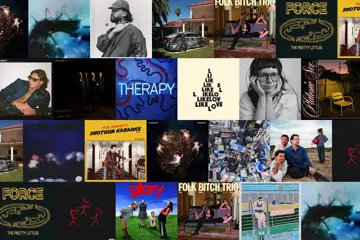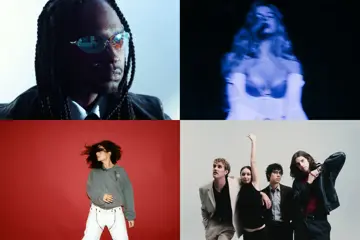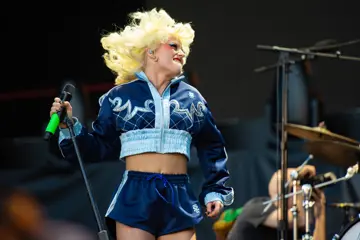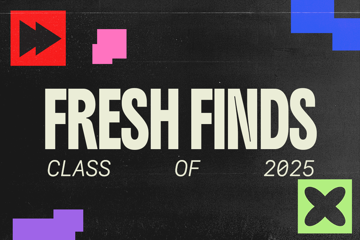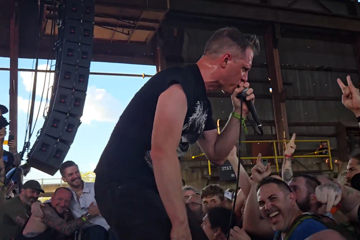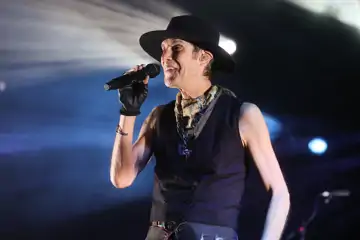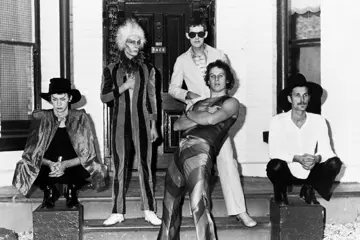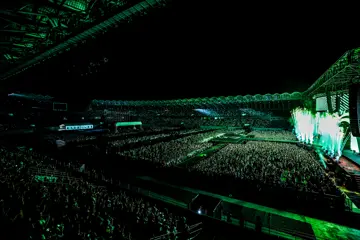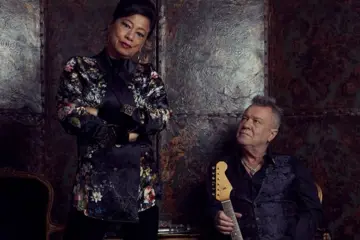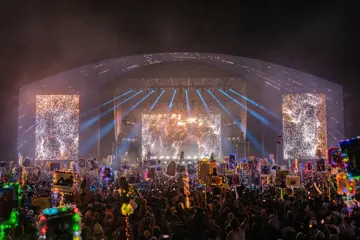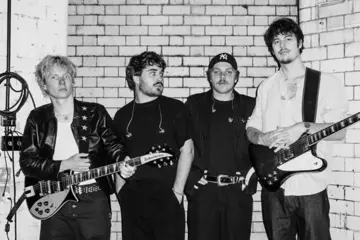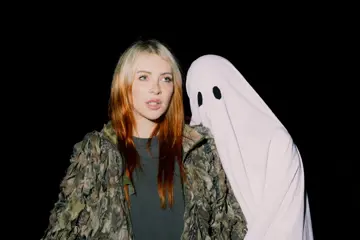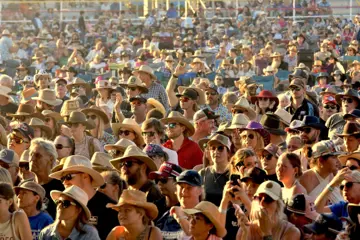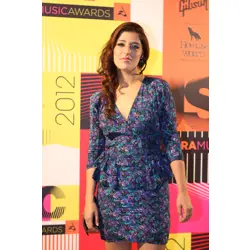 Sophia Brous
Sophia BrousCue Supersense, a bold, immersive and potentially exhausting journey into the pulsing, disarming heart of art, ritual and transformation. Curated by multi-faceted performer and avant-garde director Sophia Brous, Supersense is an invitation to peel back the veneer of spectacle and drown in the viscera. Or, as Brous likes to say, “I’ve been calling it a hyper-coloured desert flower. It should bring forth activity. It should bloom.”
So why call it a festival, a term now so mundane it’s lost any charm or claim to credibility it may once have enjoyed? Unruffled by such Devil’s advocacy, Brous responds, “These things are events and words and although there are often good ideas behind them, what do they do apart from add another layer of activity into the landscape? For me, with Supersense, I wanted to break out of that idea of the festival as part of the ‘entertainment’ context, y’know, where you turn up, buy a ticket and passively receive a performance.”
Although the standard passivity does remain an option for Supersense punters, the programme looks to push our limits. From the raucous, sonic cinematics of HTRK to the gospel songs of Gurrumul and the animistic “multi-hour, intense, violent and extreme dance and movement ceremony” of Kuda Lumping, Supersense crosses time, space and genre. With film installations from Grouper and Paul Clipson, dance works from Chunky Move and Tao Dance Theatre, appearances by US artists Ariel Pink, Lydia Lunch and Marc Ribot, plus a specially-commissioned Eno programme, Supersense offers an opportunity to be “buoyantly overwhelmed and in wonder”.
While justly proud of the festival’s line-up, Brous insists it will not be a weekend of hero worship. “It’s not about headliners for me, it’s about a cast, and this unrolling of a festival as a unified theatre. It’s kind of about democratising, about people stepping into these big concert halls and experiencing a festival of these precious moments.”
This philosophy is underscored by the ticketing structure. Though it is possible to buy one-offs for specific acts, the top line option is for full event and day passes, the idea being that elements of accident and sheer overload may well create the ‘ecstatic potential’ Brous is after. In this there is something shamelessly shamanic about Supersense.
“Shamanism has come up a lot in the process of curating because it relies on an acquiescence, a transportation and a mythology.”
“Shamanism has come up a lot in the process of curating because it relies on an acquiescence, a transportation and a mythology,” Brous elaborates. “Also, depending on your background and what you believe, a lot of shamanism relies on a cult of personality. So, when I look at a Lydia Lunch or a Jon Spencer Blues Explosion I look at the idea of a secular prophet, and the way that all this interacts is that it asks, ‘Who are our secular shamans? Who are our sacred shamans?’”
The dance elements, and in particular the Javanese ritual of Kuda Lumping, perhaps tap more directly into this current. “From a ritual and traditional context movement is inextricably linked to folk forms, whether it be dervishes or court dances or Peking Opera. Y’know, there’s gesture in everything. So, I didn’t go into this thinking, ‘Oh, we should include some dance,’ but I just followed threads of curiosity and projects that looked like they had potential.”
Overseen by former Chunky Move AD Gideon Obarzanek, Kuda Lumping is the prime example of this. Discovered courtesy a friend travelling through Indonesia who made a “three-hour field recording”, eyebrows arched, Brous recalls being immediately transfixed by its power, not simply as a performance but as an occurrence. “It sorta sounded like garage, Gamelan disco.”
Here again however, intriguing questions about context arise. While a festival is a context in itself, a ceremonial dance ritual is not normally an item of entertainment, nor simply a splash of festival bill exotica. “We asked ourselves, ‘How can you bring the village to the Arts Centre?’ Well, you can’t. So then we set about heightening the ecstatic essence of it, and so what Gideon’s doing is putting a frame around it.”
Of course, around this frame exists the bigger frame; namely, the plushly-funded Arts Centre and all of its associations with established forms. At first glance, chaotic tribal happenings and unapologetically avant-garde adventurism would not appear to fit. “People want to experience extraordinary and profound things. There’s enough work sitting in the middle of the road of everyday malaise, so why speak to that? Why don’t we go bold? The Arts Centre have been completely enabling in that respect. It’s the perfect place to do this festival because when you work in a familiar environment but subvert it you create an interesting potential.”
Indeed, Supersense promises Melbourne festival fans something unusually dangerous, powerful and unexpected.

